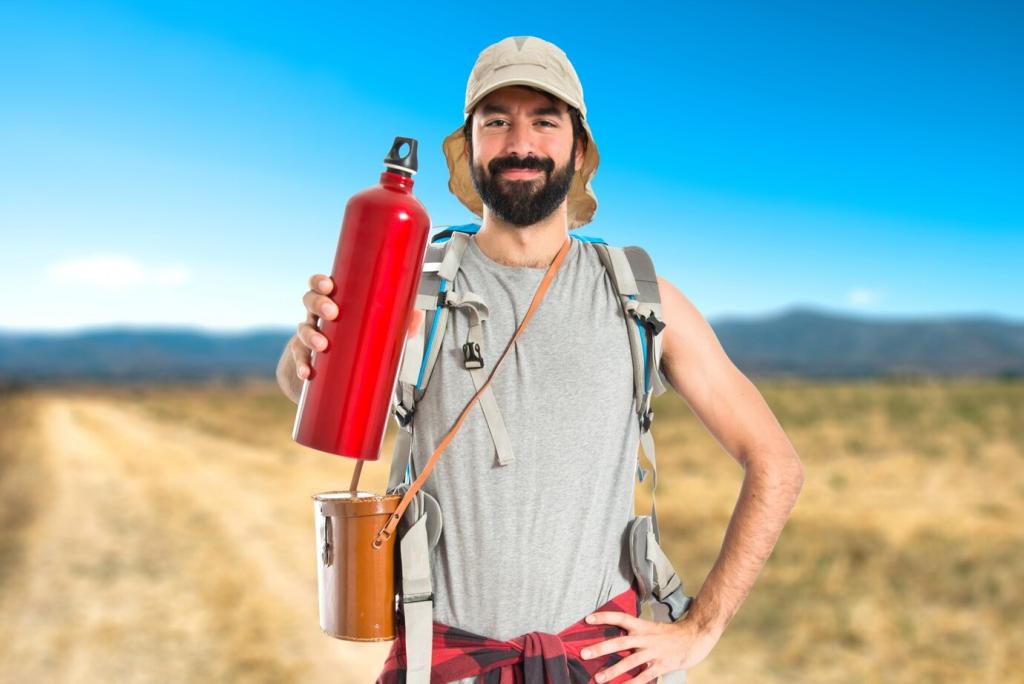Backpacks and Bags: Seasonal Picks for Hikers
Welcome to our trailhead. Chosen theme: Backpacks and Bags: Seasonal Picks for Hikers. From spring mud to winter powder, explore packs that match the weather, the mileage, and your story. Share your favorite seasonal pack in the comments and subscribe for monthly trail-tested picks.
Spring Thaw Essentials: Packs for Rain, Mud, and New Miles
Light Rainproof Daypacks
Choose 20–30L daypacks with durable water repellent fabrics, sealed or shielded zippers, and roll‑top or flap closures. A front stretch pocket stashes a wet shell quickly, while pole loops help keep muddy trekking poles away from the rest of your spring kit.
Mud-Friendly Materials and Cleanup
Look for smooth-faced ripstop nylon or TPU-coated panels that wipe clean after puddle-hopping. A removable frame sheet and drain grommets make post-hike rinsing easy. Keep a small brush in an outer pocket to flick away caked mud before it dries into stubborn clumps.
Wildflower Weekend Packing Strategy
Spring days swing cool to warm, so pack light layers in color-coded stuff sacks for fast access. Tuck a compact sit pad near the top for damp overlooks, and slide microspikes along the side if snowy patches linger on north-facing traverses.


Summer Heat and High Mileage: Ventilation and Hydration First
Prioritize trampoline-mesh frames that create a true chimney gap, or sculpted foam with wide airflow channels. Light, perforated shoulder straps reduce sponge-like sweat buildup. You will feel less clammy during climbs and recover faster on breezy summits when your back can breathe.
Summer Heat and High Mileage: Ventilation and Hydration First
Select packs with a dedicated reservoir sleeve, secured hose routing, and a magnetic bite-valve dock. Add a 2–3L bladder for long, exposed traverses. Pair with side pockets that comfortably hold 1L bottles, letting you mix electrolytes in one while keeping water pure in another.
Modular Organization for Layers and Snacks
Choose packs with generous front dump pockets, dual hipbelt pockets, and internal sleeves for maps and emergency layers. Use ultralight pouches to separate warm accessories and quick calories. Repacking on the move is easier when each item has a predictable, season-smart home.
Visibility and Safety as Days Grow Short
High-visibility rain covers and reflective details help you stand out at twilight trailheads. Consider a small, always-on clip light attached to a daisy chain. Keep your headlamp in a top pocket, not buried, so you can locate it instantly when the sky flips to indigo.
Winter-Ready Workhorses: Secure, Stable, and Glove-Friendly
Attachment Points for Snow Tools
Seek reinforced lash points for snowshoes, ice axes, and trekking poles, plus a sturdy front panel that tolerates sharp edges. Side compression straps should thread easily even when stiff. A shove-it pocket grabs a puffy jacket without wrestling with frozen zippers.
Insulated Hydration and Glove-Friendly Details
Choose insulated hose sleeves, right-angle hose ports, and oversized zipper pulls you can manage in thick gloves. A thermos-friendly side pocket prevents lids from icing solid. Keep chemical warmers in a hipbelt pocket to revive sluggish phone batteries and stiff, cold hands.
Cold-Weather Load Transfer and Stability
A supportive framesheet or light internal frame keeps heavy winter layers and safety gear riding close to your center. Broad hipbelts spread pressure over bulky clothing. Sternum straps stabilize when sidehilling on crust, reducing energy loss from constant pack sway.

Liter Guide by Season
Spring and summer day hikes thrive with 18–30L, depending on water needs and weather volatility. Autumn layers nudge many hikers to 25–35L. Winter day missions often require 30–40L to swallow insulation, safety extras, and bulkier food that stays appetizing in the cold.
Torso Length and Adjustability Over Layers
Adjust frames to keep the hipbelt centered on the iliac crest even when wearing thick jackets. Shoulder strap anchor points should sit slightly behind the crest of your shoulders. Re-check fit when you change footwear or layers, because stance height subtly shifts pack geometry.
Inclusive Fits and Strap Shapes
Consider women’s-specific or unisex frames with varied shoulder-strap curves and hipbelt angles. Swappable belts accommodate different waists and layering. Short, regular, and long torsos are not just heights; they reflect back length. Try loads with weight to confirm the fit holds under pressure.
Pack Smarter: Seasonal Checklists You Can Adapt
Spring Essentials Checklist
Pack a light shell, quick-dry layers, compact spikes for lingering snow, a small towel for splashes, and a pack cover. Add a repair kit for blown seams after muddy slides, and stash gaiters where you can grab them before entering a puddled forest road.
Summer Essentials Checklist
Carry a 2–3L reservoir, electrolyte mix, sun hoody, brimmed hat, and a reflective emergency blanket that doubles as shade. Place salty snacks in hipbelt pockets. Include a tiny bottle of soap for sunscreen-sticky hands and a bandana to cool your neck at midday.
Fall and Winter Essentials Checklist
Layer a synthetic puffy, windproof shell, and warm accessories near the top. Add microspikes or crampons, a headlamp with fresh batteries, and a thermos. Keep a foam sit pad in the shove-it pocket to insulate rest stops from frozen logs and icy boulders.
